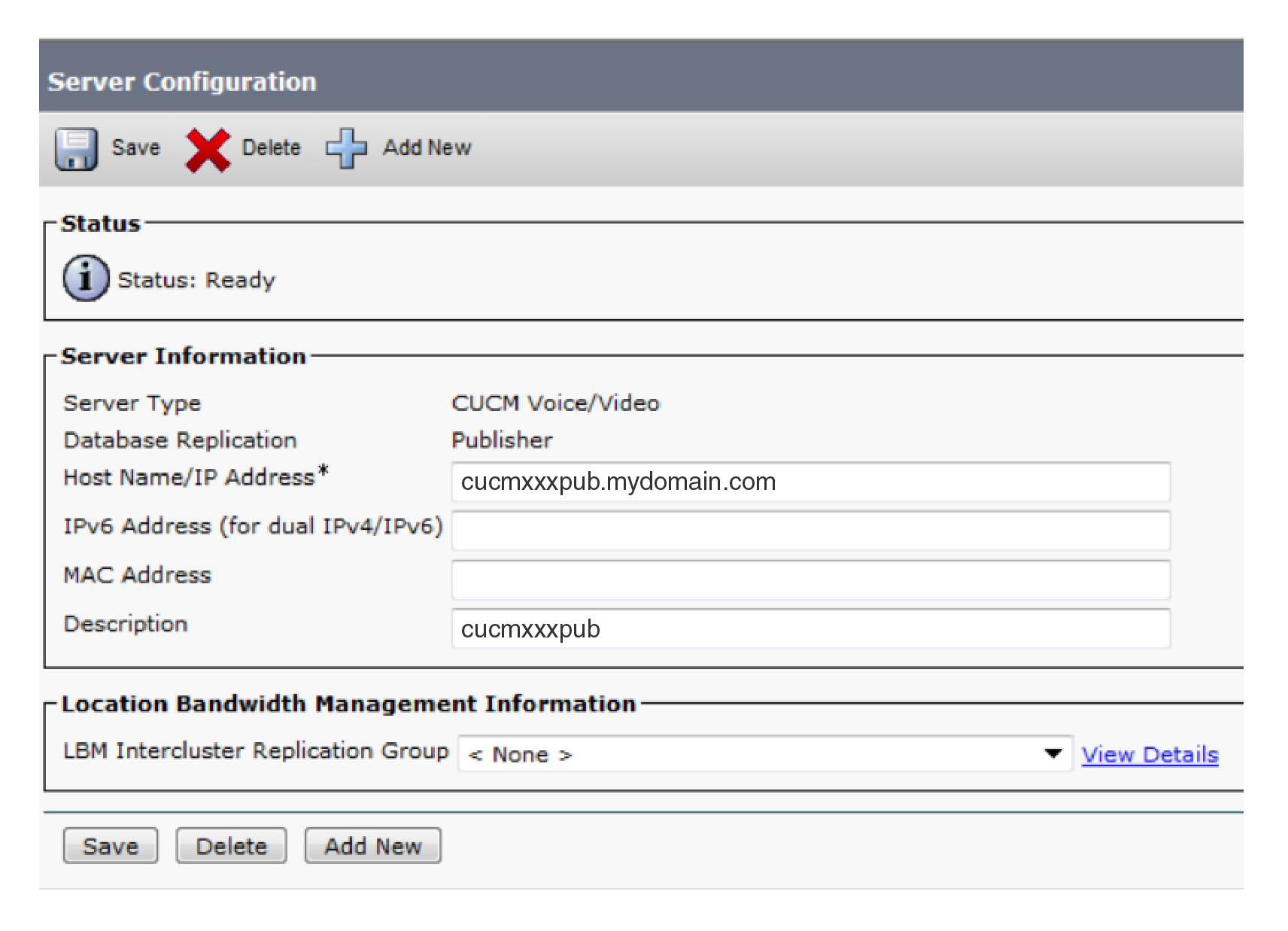Troubleshooting Phone Services on Unified CM for Webex app
 Feedback?
Feedback?The troubleshooting procedures help you to diagnose and resolve issues when you're migrating from Cisco Jabber to Webex app. Each section covers a solution that helps you to diagnose the issue and continue with the migration.
Add Cisco Unified Communications Manager services to specify the address and other settings for the service.
The CTI UC service provides Webex App with the location of the CTI service, which retrieves a list of devices that are associated with the user. The voicemail service ties into your existing Unity Connection deployment and provides voicemail retrieval to users when they are associated with the corresponding service profile.
| 1 |
Open the Cisco Unified CM Administration interface. |
| 2 |
Select . The Find and List UC Services window opens. |
| 3 |
Select Add New. The UC Service Configuration window opens. |
| 4 |
In the Add a UC Service section, select CTI from the UC Service Type drop-down list. |
| 5 |
Select Next. |
| 6 |
Provide details for the CTI service as follows: |
| 7 |
Save your changes, return to , and then click Add New. |
| 8 |
Choose Voicemail and then click Next. |
| 9 |
Provide details for the Voicemail service as follows: |
| 10 |
Save your changes. |
What to do next
Add UC services to the service profile.
After you add and configure Cisco Unified Communications Manager services, you add them to a service profile. You can apply additional configuration in the service profile.
| 1 |
Open the Cisco Unified CM Administration interface. |
| 2 |
Select User Management > User Settings > Service Profile. |
| 3 |
Enter a name for the service profile in the Name field. |
| 4 |
Select Make this the default service profile for the system if you want the service profile to be the default for the cluster. |
| 5 |
Add your UC services under Voicemail Profile and CTI Profile. |
| 6 |
Set Credential source for voicemail service to Unified CM - IM and Presence. |
| 7 |
Complete any additional configuration and then click Save. |
What to do next
You must assign the configured service profile to end user accounts in Unified CM.
| 1 |
From Cisco Unified CM Administration, choose System > Server. |
| 2 |
Change the IP address in the HostName/IP Address field to FQDN. |
| 3 |
Enter the command |
| 4 |
Enter the command |
| 5 |
Repeat step 1 for all the servers that you want to configure with FQDN. |
| 6 |
Restart Cisco TFTP service on all the nodes to update the configuration files. |
| 7 |
Restart Cisco Unified Communications Manager service on all the nodes to push the updated configuration files to the registered devices. |



